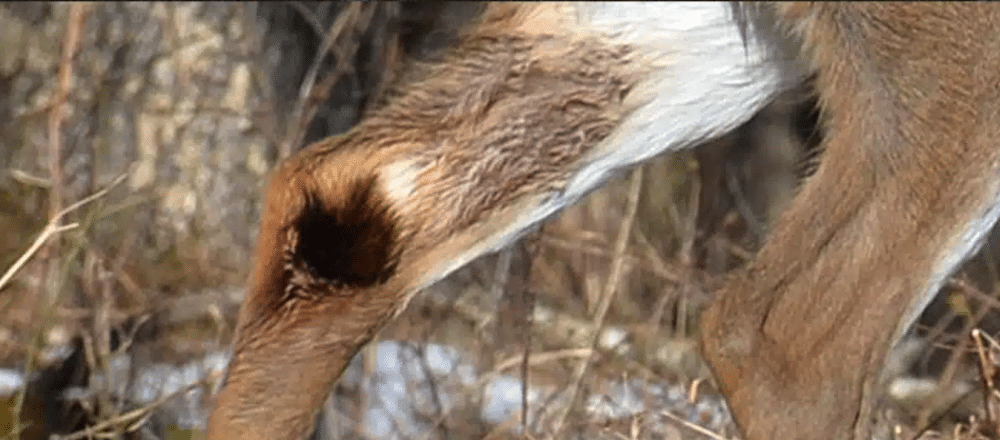A lot of bowhunters set a goal of harvesting a mature buck. But what exactly does that mean? Biologists divide bucks into three age categories including young, middle-aged and mature. A mature buck is 5 years old or older. There are a lot of reasons many of today’s hunters target older deer, but that’s not always been the case.
“For a long time, because hunters harvested bucks at such a high rate, we drove age structures very young so the majority of bucks were only 1 or 2 years old,” said Kip Adams, chief conservation officer of the National Deer Association. “Across the United States, there is a better age structure and buck population than we’ve had in at least the last 150 years, and it’s because hunters are not shooting every single yearling buck that they see.”
To shoot a mature buck, you need to know what you’re looking for. You might be surprised to learn you can’t age a buck by its antlers.
“The best way to do that is to understand what the body characteristics are and how they change as a deer matures,” Adams said.
According to Adams, the main body characteristics to look for to age a buck include the length of the legs relative to the depth of the body; the size of the neck; the point where the neck connects to the brisket; the musculature in the shoulders; the size of the hindquarters; a sagging belly and tarsal gland staining.
Fall is the best time to identify bucks by age because they are the heaviest they are going to be, and they experience neck swelling and tarsal gland staining.

Young bucks won’t have a lot of staining on their tarsal glands, pictured above. Photo Credit: NDA
One- and 2-year-old bucks are considered young. These are the bucks that many hunters try to avoid shooting to give them time to mature.
“More hunters today understand the benefit of protecting young bucks than ever before,” Adams said.
Yearling bucks look similar to a doe with antlers. They have long legs, a thin neck and a skinny waist. Their legs may look too long for their body. Yearling bucks don’t have many muscles in their shoulders. Their hindquarters are larger than their front end. There won’t be any swelling in their neck during the rut. Yet, depending on nutrition, yearling bucks can have numerous antler points.
A whitetail’s tarsal glands are located on its hind legs. Deer use these glands to communicate by urinating on and rubbing the glands. During the rut, older bucks do this frequently, which causes the glands to become stained. In contrast, yearling bucks will have minimal tarsal staining.
Two-year-old bucks still have legs that appear too long for their bodies. While they have an overall sleek appearance, they’ve developed some slight muscles in the shoulders. During the rut, they may display moderate tarsal gland staining and neck swelling. The hindquarters will appear larger than the front quarters. The buck’s antlers may be equal to or wider than the spread of the ears.

A three-year-old bucks’ antlers are at least halfway to their full size. Photo Credit: NDA
Three-year-old bucks appear to have an appropriately proportioned frame. Their legs fit their body size. The chest is larger than the hindquarters. They’ve developed shoulder muscles and experience a lot of swelling in the neck during the rut. There’s also lots of tarsal staining. But the waist is still lean. Adams describes them as big, strong, lean and fast. Research shows a 3-year-old buck has achieved 50% to 75% of its antler growth potential.
The bodies of 4-year-old bucks are fully developed. According to Adams, their legs may suddenly appear too short for their body. They have very muscular shoulders and heavy neck swelling during the rut. Tarsal gland staining is heavy and may even extend below the gland. The waist has dropped down to become even with the chest. Antler growth is between 75% and 95% of potential.
Bucks reach full maturity at age 5. Their legs appear too short for their stocky bodies. They have full, muscular shoulders and heavy neck swelling during the rut. The neck blends into the chest and it becomes even with the waist. They seem to have a sagging or “pot” belly. There will be a lot of staining on and beneath the tarsal gland. Between ages 5 and 7, their antler growth reaches maximum potential.
No single characteristic can help you identify a buck’s age. However, analyzing the body characteristics helps paint a picture. The best way to learn to age a buck in real time is to practice by looking at pictures of bucks. The National Deer Association has a video that explains the differences while showing examples and then gives you several opportunities to guess. Check out the video “How to Age Deer in the Field, plus 20-Buck Aging Test.”
“None of these are an exact science and I certainly wouldn’t bet my house, or my truck, or my bow on estimating age, but just like people, bucks go through very distinct changes in body size and body characteristics as they age,” Adams said.
Once you harvest a buck, you can get a more exact age by looking at the deer’s lower jawbone and tooth wear. Some hunters choose to send teeth to a lab for aging. Learning to age a buck on the hoof is important if you’re hoping to harvest a buck of a certain age class. But for some hunters, especially newer hunters, harvesting any legal buck is the goal.
“Don’t worry about how old it is,” Adams said. “Go and have a good time and start developing some experience.”